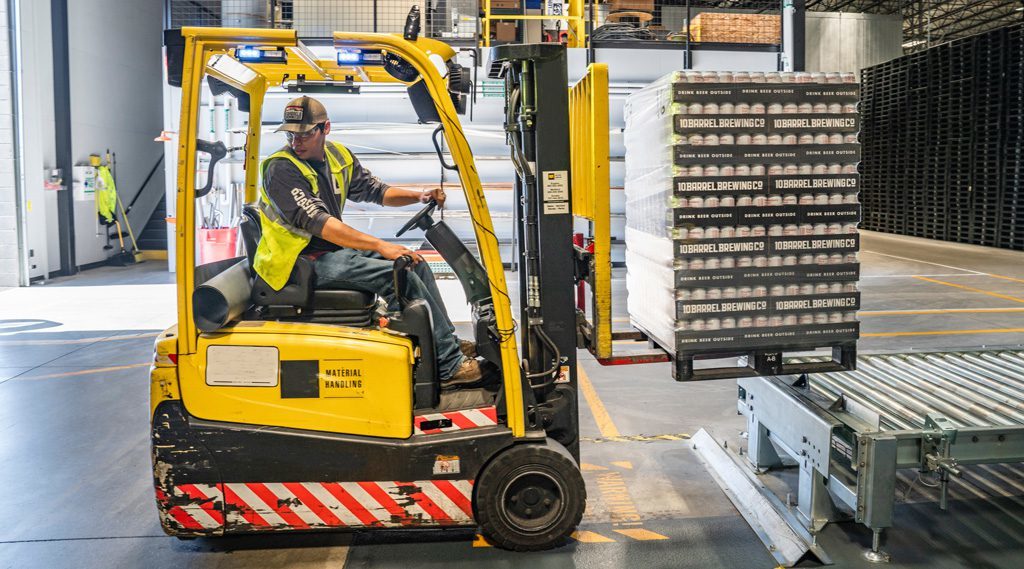Upload your press release
Why A Forklift Battery Price Isn't Its True Cost

When it comes to purchasing a battery for your forklift, the same concept can be applied. The true cost of a forklift battery involves much more than simply the upfront price tag. Often, what appears to be the most inexpensive option can end up being the more expensive choice in the long run.
And, as someone who oversees the operations in a warehouse or other facility that uses forklifts on a regular basis, you know why that isn't good for your company's bottom line.
But how do you know what the true cost is for a forklift battery? Below is what you need to know when figuring the true cost of a forklift battery to determine which is the best option for your fleet.
Initial Costs
Electric commercial forklifts generally operate using one of two types of batteries. They are:
Lead-acid
Lithium-ion
Lead-acid batteries are considered the traditional method for powering forklifts. Featuring a removable top, lead-acid batteries generate electricity through a chemical reaction between lead plates and sulfuric acid. In order to work, workers must regularly refill the units with water, which allows the chemical process to begin.
Lithium-ion batteries are newer technology, capturing the attention of more and more warehouse managers. Lithium-ion batteries are more energy dense than lead-acid, as well as include several safety and convenience features. For example, lithium-ion batteries do not require water maintenance because the cells are sealed shut.
Up front, for one single battery, lithium-ion is the more expensive choice of the two. Prices vary, but when simply comparing the initial price of just one battery, a lithium-ion battery can be roughly twice as much as a lead-acid battery.
However, that's just the beginning of the story.
Operating Times
Many companies have multi-shift operations. This is a critical component to consider when comparing whether lithium-ion batteries or lead-acid batteries are a more cost- and time-efficient choice for your company.
Because lithium-ion batteries are a newer type of battery available to forklift fleets, advanced technology has made them far more efficient when it comes to operating them.
Let's take a look:
Run times:
Lithium-ion batteries typically run about 7.2 hours before requiring a charge.
Lead-acid batteries, however, run about 5.4 hours before requiring a charge.
Charging time:
Lithium-ion batteries take 1 to 2 hours to charge. They can be opportunity charged, meaning in between shifts or on break.
Lead-acid batteries require 8 hours to charge, or an entire shift.
Cool-down period:
Lithium-ion batteries do not require a cool-down period after charging.
Lead-acid batteries require an 8-hour cool-down period after charging.
Safe discharge:
Lithium-ion batteries can safely be discharged down to 20% capacity.
Lead-acid batteries can safely be discharged down to 30% to 50% capacity.
What does this mean for multi-shift operations? Each forklift will require one lead-acid battery per shift. So, if your warehouse operates 24 hours a day, each forklift requires 3 lead-acid batteries. Crews will have to replace each battery in between shifts, adding labor costs to the additional batteries required.
If using lithium-ion batteries to power your forklifts, only 1 lithium-ion battery is required per forklift for a 24-hour period.
Average Lifespan
How often you must replace a battery is also an important component in determining its true cost.
If your crew maintains its batteries well, both lead-acid and lithium-ion batteries have average cycle counts. Based on how often you use a battery, this can help you determine an approximate lifespan for your battery.
Lead-acid batteries generally last between 1,000 and 1,500 cycles.
Lithium-ion batteries generally last between 2,000 and 3,000 cycles.
It's important that your batteries are well maintained to reach these cycle counts. And, any high level of maintenance - as outlined below - can be time-consuming and add labor costs to your bottom line as well.
Required Maintenance
Lead-acid batteries require more maintenance because of the battery's design. Water levels must be precisely controlled, and when in use, the battery constantly loses water. A water maintenance system typically involves:
Only topping off with water when fully charged and cooled down
Refilling the water often enough so that the top of the lead plates is never exposed (about every 10 charge cycles)
Using water between 5 and 7 on the pH scale
Leaving enough space for the liquids inside to expand, which occurs when the battery is in use
Equalizing the cells regularly
Controlling the temperature
Lithium-ion batteries do not require watering, since their cells are completely enclosed. This saves valuable manpower that can be used more efficiently elsewhere in your operations.
You'll also need to create a separate battery charging room or station for lead-acid batteries that workers must maintain so that temperatures can be monitored. Lead-acid batteries can get very hot while they charge and can leak explosive gas after reaching their peak charge.
Using a lithium-ion battery instead can give you valuable real estate back by freeing up space that otherwise would need to be dedicated to maintaining a charging room.
Bottom Line
When comparing lead-acid and lithium-ion batteries, their true costs differ greatly:
A company must purchase a larger number of lead-acid batteries if it is a multi-shift operation.
Lithium-ion batteries offer longer operating times and lifespans, making them the less expensive option in the long run.
Lithium-ion batteries do not require the same amount of square footage for safely charging, cooling and storing.
Lead-acid batteries require more maintenance, and therefore higher labor costs.
More Info: https://www.fluxpower.com/blog/why-a-forklift-battery-price-isnt-its-true-cost
Related Articles
Copyright ©2024. All Rights ReservedDesign, CMS, Hosting & Web Development :: ePublishing